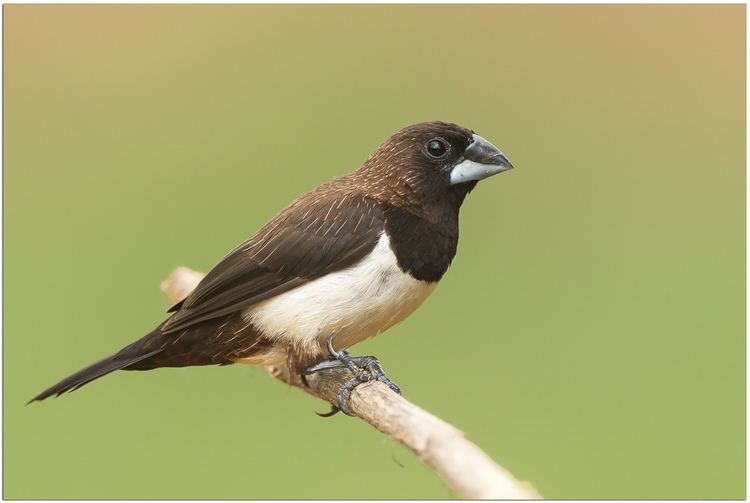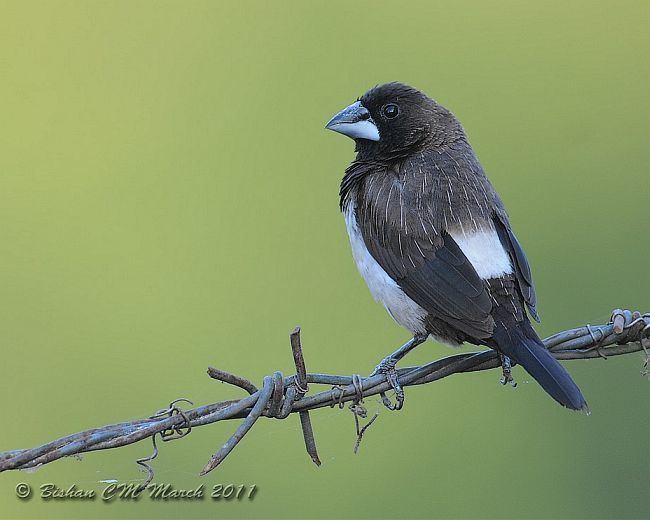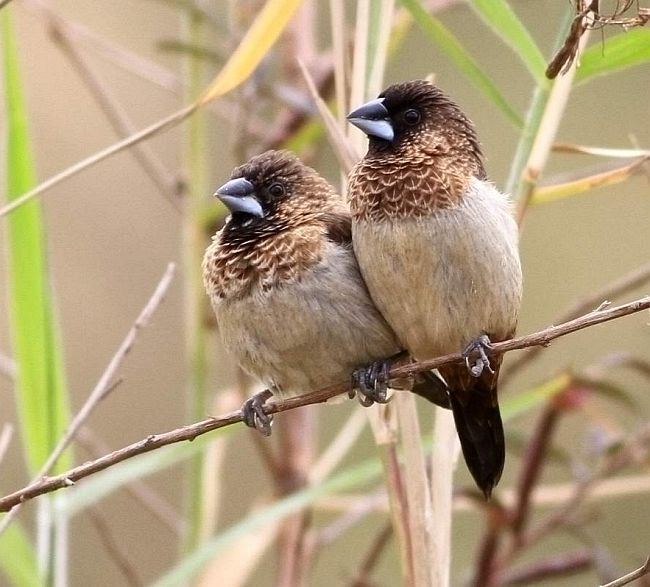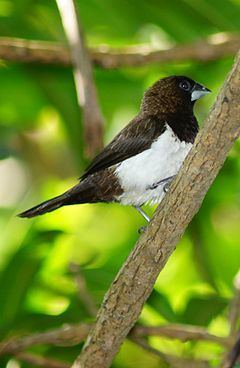Genus Lonchura Phylum Chordata Rank Species | Family Estrildidae Scientific name Lonchura striata Higher classification Munia Order Passerine | |
 | ||
Similar Munia, Bird, Society finch, Scaly‑breasted munia, Estrildid finch | ||
The white-rumped munia or white-rumped mannikin (Lonchura striata), sometimes called striated finch in aviculture, is a small passerine bird from the family of waxbill "finches" (Estrildidae). These are close relatives of the true finches (Fringillidae) and true sparrows (Passeridae).
Contents

It is native to tropical continental Asia and some adjacent islands, and has been naturalized in some parts of Japan. Its domesticated hybrid descendant, the society finch or Bengalese finch, is found worldwide as a pet and a biological model organism.

White rumped munia bird 3
Description

The white-rumped munia is approximately 10 to 11 cm in length, with a stubby grey bill and a long black pointed tail. The adults are brown above and on the breast, and lighter below; the rump is white. There is some variation between the subspecies, but the sexes are almost impossible to distinguish in all subspecies; males have a more bulky head and bill.
Subspecies include:

Ecology
The white-rumped munia is a common resident breeder ranging from South Asia to southern China east to Taiwan, and through Southeast Asia south to Sumatra; it frequents open woodland, grassland and scrub, and is well able to adapt to agricultural land use. It is a gregarious bird which feeds mainly on seeds, moving through the undergrowth in groups and sometimes accompanying other birds such as puff-throated babblers (Pellorneum ruficeps). The nest is a large domed grass structure in a tree, bush or grass into which three to eight white eggs are laid. They are also known to use abandoned nests of Baya weaver. They are often found near water and have been observed feeding on algae. It has been suggested that they obtain protein from their diet of algae often in the species Spirogyra, which grows in paddy fields.
It is a common and widespread bird across its large range, and is thus not considered a threatened species by the IUCN. In fact, it may locally become a nuisance pest of millets and similar grains. Even the Nicobar Islands subspecies with its limited range seems to be able to cope well with human settlement. As it is a drab-coloured and rather reclusive bird inhabiting dense undergrowth, the white-rumped munia is not necessarily conspicuous even where it occurs in considerable numbers.
Origin
Origin and phylogeny has been obtained. Estrildinae may have originated in India and dispersed thereafter (towards Africa and Pacific Ocean habitats).
